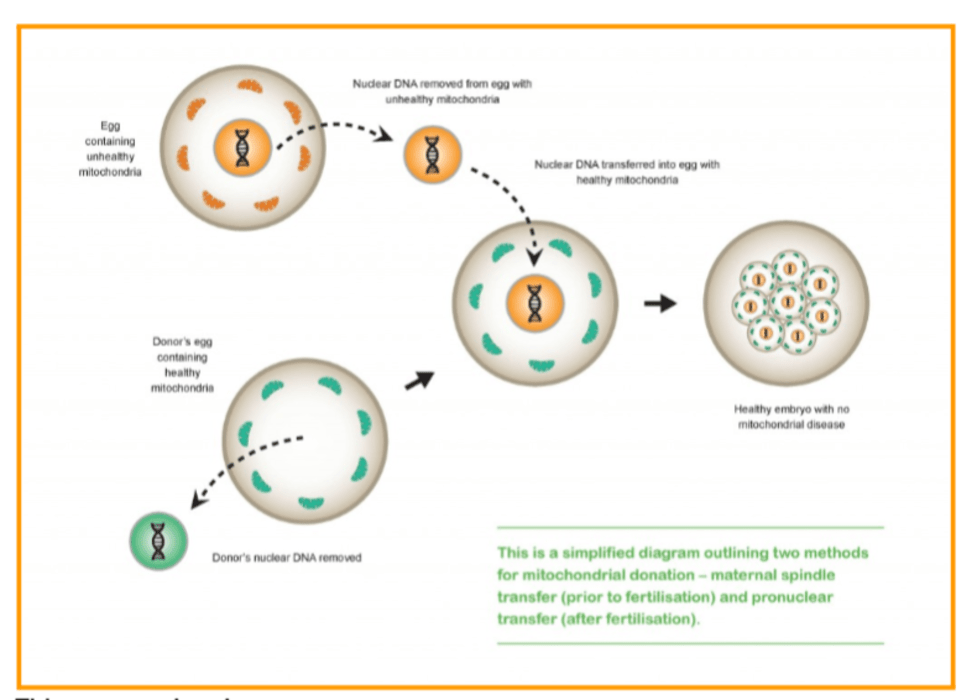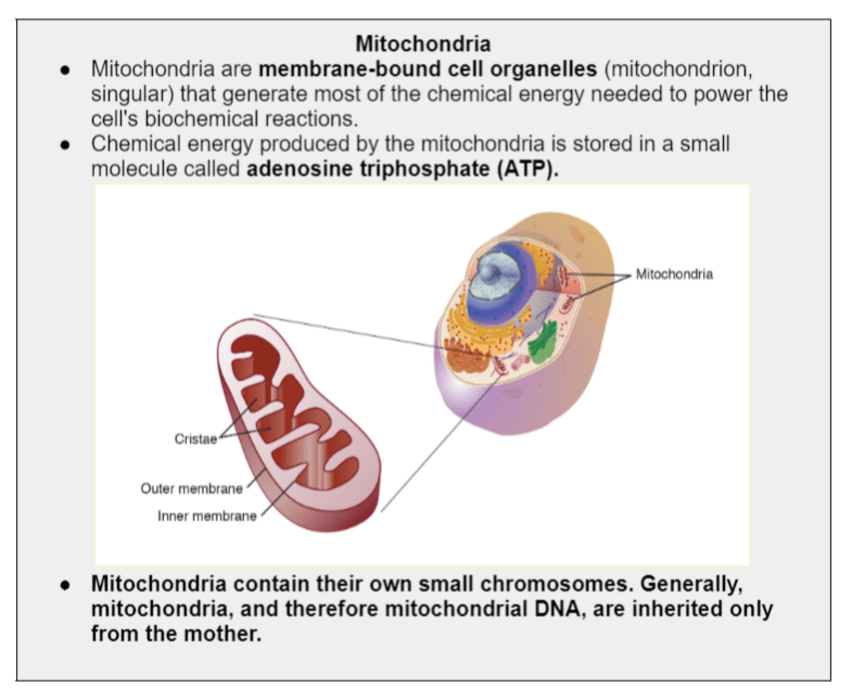News Excerpt:
Scientists are currently preparing for a clinical trial to determine whether mitochondrial donation is safe and effective, following the passage of a law in Australia in 2022 that will allow for the practice.
What is Mitochondrial Disease?
- Mitochondrial disease, commonly referred to as Mito, is a group of diseases that impair the mitochondria's ability to produce the energy organs need to function properly.
- Mito can manifest in numerous forms, affecting different organs and potentially leading to organ failure.
- There is no cure for Mito, but advancements in medical science, such as mitochondrial donation, offer new hope.
Causes of Mitochondrial Disease:
Mitochondrial disease can be caused by faulty genes in two different types of DNA:
- Nuclear DNA: This is the DNA that is inherited from both parents.
- Mitochondrial DNA: This DNA is inherited exclusively from the mother.
- The risk of passing on mitochondrial disease through mitochondrial DNA is unpredictable.
-
- A mother with mild symptoms might give birth to a child with severe symptoms.
Symptoms of Mitochondrial Disease:
- Mitochondrial disease affects about one in every 5,000 people, making it the most common inherited metabolic condition.
- Symptoms can vary widely in severity and rate of progression.
- While some individuals may experience severe and rapidly progressing symptoms, others may have mild symptoms that progress slowly.
- Mitochondrial disease that appears in childhood often involves multiple organs, progresses quickly, and can have severe outcomes.
- Commonly affected organs include heart, brain and muscles.
- In Australia, about 60 babies born each year are expected to develop mitochondrial disease, which can be fatal.
-
- In 2022, the Australian Senate approved the Mitochondrial Donation Law Reform Bill 2021, commonly known as Maeve’s Law.
What is Mitochondrial Donation?
Mitochondrial donation is a new IVF-based procedure that allows individuals with faulty mitochondrial DNA to have children who are genetically related to them without passing on the faulty DNA.

This process involves:
- Removing the nuclear DNA from an egg of a person carrying faulty mitochondrial DNA.
- Inserting the nuclear DNA into an egg donated by someone with healthy mitochondrial DNA.
- Fertilizing the egg with sperm, resulting in a child who inherits nuclear DNA from the intending parents and healthy mitochondrial DNA from the donor.
Complex procedure:
- It requires highly trained scientists and sophisticated equipment.
- Hormone injections are administered to both the egg donor and the person with Mito to stimulate the ovaries to produce multiple eggs.
- These eggs are then retrieved through an ultrasound-guided surgical procedure.
Maeve’s Law on Mitochondrial Donation
This law allows mitochondrial donation for research and clinical trials under strict conditions. Key points include:
- Licensing Requirements: Facilities need a special license to perform mitochondrial donation.
- Research and Training: Licenses will initially be issued for pre-clinical and clinical trial research and training to ensure safety and efficacy before the procedure is introduced into clinical practice.
The Need for Donor Eggs
- One of the main challenges in mitochondrial donation is sourcing eggs.
- While frozen eggs can be used for preclinical research and training, "fresh" eggs are required for clinical trials.
- Potential sources for these eggs include individuals who store eggs they no longer intend to use and volunteers willing to donate eggs for research.
Conclusion
Mitochondrial donation represents a significant breakthrough for families affected by mitochondrial disease, providing the possibility of having healthy, genetically related children. While the procedure is still in the experimental stage, ongoing research and upcoming clinical trials hold promise for making this innovative treatment widely available.
|
Mitochondria
|



